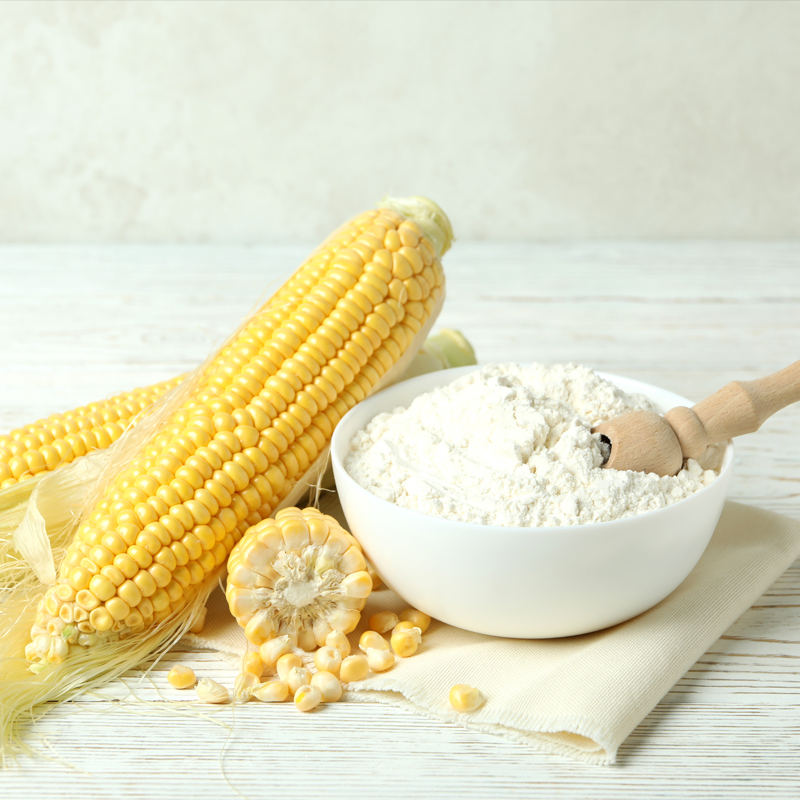
100 gr |
-- |
|
|---|---|---|
| Carbohydrate (gr) | 15.04 |
4928.47 |
| Protein (gr) | 3.59 |
1176.23 |
| Fat (gr) | 12.46 |
4083.43 |
| Fiber (gr) | 1.36 |
445.97 |
| Cholesterol (mg) | 14.64 |
4795.8 |
| Sodium (mg) | 325.27 |
106557.75 |
| Potassium (mg) | 392.16 |
128471.4 |
| Calcium (mg) | 78.15 |
25603.27 |
| Vitamin A (mg) | 46.04 |
15084.01 |
| Vitamin C (mg) | 6.16 |
2019.31 |
| Iron | 0.62 |
203.1 |
Cornstarch is a widely used thickening agent in cooking and baking. It is a suitable option for individuals with celiac disease because it is naturally gluten-free. However, it has a high glycemic index (GI), meaning it can cause a rapid spike in blood sugar levels. While cornstarch can be a valuable ingredient for many recipes, individuals concerned about blood sugar management should consume it in moderation.
The calories in cornstarch are 370 calories per 100 grams.
Cornstarch is a fine, white powder extracted from the endosperm of corn kernels. It is primarily used as a thickener in soups, sauces, gravies, and desserts, thanks to its ability to form a smooth, gel-like consistency when mixed with liquid and heated.
Unlike corn flour, which contains more fiber and protein, cornstarch is almost entirely composed of carbohydrates, making it a highly refined ingredient.
Due to its high carbohydrate content and lack of fiber and protein, cornstarch provides quick energy but may not be ideal for sustained energy release or blood sugar control.
Gluten-Free Alternative for Celiac Disease
Cornstarch is a safe and effective thickening agent for those with gluten intolerance or celiac disease, making it a popular substitute for wheat-based flours.
Easily Digestible Energy Source
Since cornstarch is rapidly broken down into glucose, it can be useful for individuals needing quick energy replenishment, such as athletes or people recovering from illness.
Useful for Thickening and Binding
It enhances the texture of many dishes, making it ideal for soups, sauces, and baked goods.
Despite being gluten-free, cornstarch has a high glycemic index (GI of 85-95), meaning it can cause a rapid increase in blood sugar levels. This makes it less suitable for:
To reduce the glycemic impact, consider combining cornstarch with fiber-rich foods or healthy proteins to slow down digestion and prevent blood sugar spikes.
If you're looking for lower-GI or more nutritious alternatives, consider:
These options offer better blood sugar control while maintaining similar thickening properties.
Cornstarch is a gluten-free, highly digestible ingredient, making it an excellent choice for celiac patients and those avoiding gluten. However, due to its high glycemic index, it should be consumed in moderation, especially by individuals concerned about blood sugar control. When used wisely in recipes, cornstarch can enhance texture and consistency, but healthier alternatives may be preferable for those seeking better blood sugar stability and nutritional benefits.